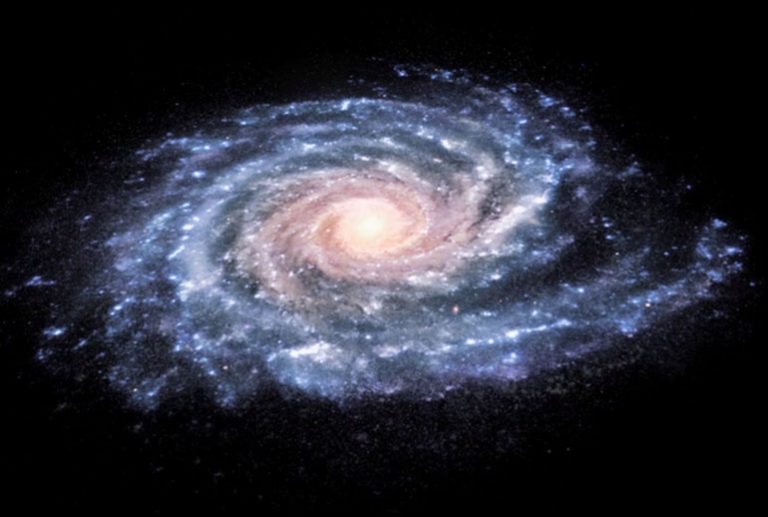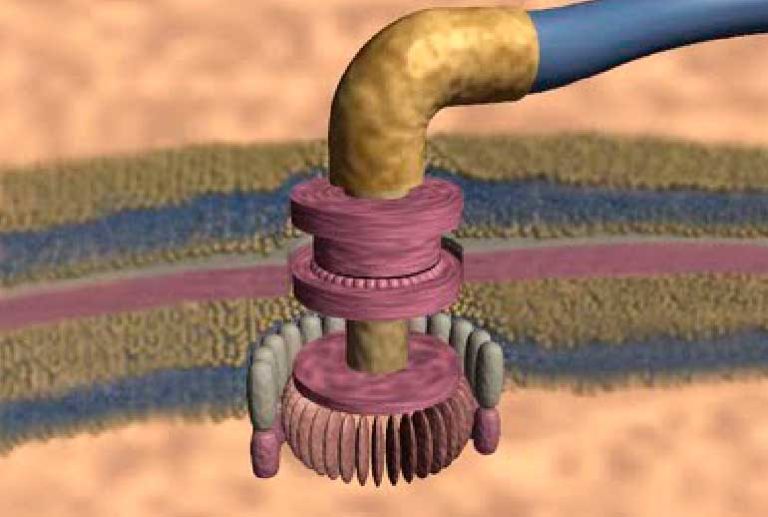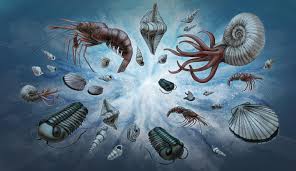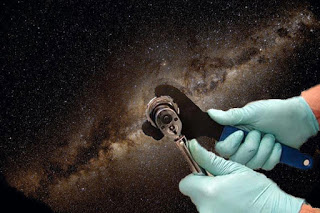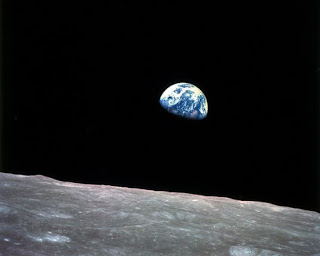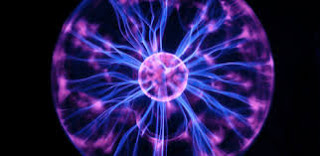Understanding how life originated—and how the transition from non-living matter to living organisms occurred—has long remained one of humanity’s greatest mysteries. For centuries, the only explanations available were rooted in religious belief. In the Western tradition, this explanation is found in the Bible, specifically in its first book, Genesis, which declares that God created all things.
Those who hold to this view—often referred to as creationists—do not claim that Genesis is a scientific account. Rather, we regard it as a divine revelation of God’s creative work, forming the foundation from which we interpret the origins of all that exists, both visible and invisible. While Genesis is not framed as a scientific treatise, we believe there is no contradiction between its message and the discoveries of science to date.
Since the earliest days of Christianity, the first book of the Bible—Genesis—has inspired a wide range of interpretations, leading to diverse perspectives on its meaning. Some readers embrace a strictly literal view, understanding the “days” of creation as 24-hour periods. According to this interpretation, the entire journey from nothingness to an immense and complex material universe, including humanity, unfolded in just seven days. From that point on, the narratives of the Old Testament take shape. Those who hold this view believe the Earth is only a few thousand years old and are commonly referred to as young Earth creationists.
Others interpret the biblical “days” not as literal 24-hour intervals, but as symbolic periods—each spanning millions of years—during which God actively guided the development of matter and life. This perspective, which I share, is known as Old Earth Creationism. By adopting this interpretation, I have found it easier to reconcile Genesis’ version with the findings of modern science. It allows for a view of the universe’s development that is both divinely guided and consistent with empirical evidence.
Regardless of how one interprets the details of Genesis, most agree on the foundational truth proclaimed in its opening verse: “In the beginning, God created the heavens and the earth.” This statement affirms that the universe had a deliberate and divine origin. In contrast, atheistic explanations remain unable to account for the origin of the universe’s raw material—where it came from, and why it exists. As believers, we affirm that everything was created by God. He endowed matter with the information and order necessary for it to organize itself, giving rise to the cosmos and to life itself.
In the 18th century, most biologists accepted the Genesis account of creation. To them, the complexity and purposeful design evident in each species—what they termed “adaptation”—served as compelling evidence of God’s intellectual authorship. Every organism seemed tailored to its environment in a way that revealed the signature of a divine Creator. Fish were equipped with gills for life underwater; birds had wings for flight; giraffes bore long necks to reach the highest leaves. Each species, it was believed, had been purposefully designed to thrive in its unique ecological niche.
This perspective changed dramatically following the publication of On The Origin of Species by British naturalist Charles Darwin on November 24, 1859. In this landmark work, Darwin proposed a revolutionary explanation for the origin and diversity of life on Earth. According to his theory, life began with a simple, primitive organism. As these early life forms reproduced, random errors—now understood as genetic mutations—occasionally occurred. For instance, an animal that climbed trees might be born with a slightly longer tail. This accidental variation provided a functional advantage, offering better balance or grip while evading predators. As a result, individuals with longer tails were more likely to survive and reproduce.
Over generations, these advantageous traits were passed down, gradually becoming more common within the population. As new mutations arose and accumulated over vast stretches of time, the cumulative changes could eventually become so pronounced that they gave rise to entirely new species. Darwin called this gradual, unguided process natural selection—the mechanism by which favorable traits become more prevalent in a population, leading to the evolution of species.
In Darwin’s view, it was not divine intervention, but rather the blind force of nature that guided this process. Evolution through natural selection, he argued, could account for the remarkable diversity and complexity of life without invoking a Creator to explain the intricate “design” seen in nature.
One of the unintended consequences of Darwin’s theory was its effect on humanity’s perceived place in creation. According to the biblical account, man holds a uniquely privileged position in the universe. At the end of each stage of creation, Scripture tells us that “God saw that it was good” (Genesis 1:12, 18, 21, 25, 30). But when it came to creating humankind, God did something entirely distinct—He formed us in His own image and likeness (Genesis 1:27). What a profound and beautiful truth!
Darwin’s theory, however, undermines this divine distinction. In his view, humans are not the pinnacle of creation but merely another product of random mutations and chance events over vast periods of time. Our form, intellect, and abilities are not the result of divine intention, but of evolutionary happenstance—just as the guava tree, by a different series of fortunate “accidents,” developed guavas. We gained intelligence; the tree produced fruit. In this framework, the difference between us is simply the result of nature’s lottery.
Darwin built part of his argument by drawing parallels between nature and the artificial selection practiced by farmers. In his day, animal breeders knew how to enhance desirable traits in livestock. For example, a sheep farmer who wanted woollier sheep would selectively breed the wooliest males and females. Over successive generations, the offspring would exhibit increasingly dense wool. In this process, human intelligence played a decisive role—it was the farmer who chose which animals would reproduce based on his goals.
Darwin proposed that nature could achieve similar outcomes without the involvement of any guiding intelligence. He used the example of a harsh winter to illustrate this idea: if only the wooliest sheep survived the cold, then they alone would be left to reproduce. If several such winters occurred, the surviving population would gradually become woollier—just as they would be under the farmer’s guidance. The key difference, Darwin emphasized, was that no intellect was required. Nature itself, through selective pressure, could shape species over time. This concept, which he called natural selection, replaced intentional design with a mechanistic, unguided process.
But Darwin went even further. He proposed that if additional major environmental changes occurred in the region where these sheep lived, the wooliest among them would continue to adapt in response. Over many generations, the cumulative changes could become so substantial that these sheep would no longer resemble their distant ancestors and would eventually be classified as an entirely new species. According to Darwin’s theory, this branching process of gradual transformation could continue indefinitely, with each species giving rise to new ones over time. In this way, he claimed to offer a comprehensive explanation for the origin of all species on Earth.
However, Darwin’s theory left two significant questions unanswered—questions that remain subjects of discussion even today:
- How is biological information transmitted from parents to offspring?
- If evolution favors progress, why have 99% of all species gone extinct?
These unresolved questions highlight some of the limitations of Darwin’s original formulation and continue to provoke reflection in both scientific and philosophical circles.
To continue this discussion, it is important to clarify two key terms that often appear in conversations about evolution: microevolution and macroevolution.
Microevolution refers to small-scale evolutionary changes that occur within a species. These changes can often be observed over relatively short periods—sometimes within just a few generations. Microevolution includes variations in traits such as size, color, or physiological features, driven by mechanisms like mutation, natural selection, and genetic drift. Two frequently cited and widely accepted examples of microevolution include the selective breeding of woolly sheep, as discussed earlier, and Darwin’s observations of finches on the Galápagos Islands, where variations in beak shape and size were seen as adaptations to different food sources. These changes occur within the species boundary and are empirically demonstrable.
Macroevolution, on the other hand, refers to large-scale evolutionary changes that go beyond the species level, resulting in the emergence of entirely new species, genera, or higher taxonomic groups over long geological timescales. Unlike microevolution, macroevolutionary processes are not directly observable within a human lifetime and are typically inferred from fossil evidence, comparative anatomy, and genetic analysis. A classic example cited by Darwin—and still referenced today—is the supposed evolutionary relationship between the modern whale and its closest living relative, the hippopotamus. According to this view, both species are believed to have evolved from a common ancestor, a small, four-legged, tailed, weasel-like mammal known as Indohyus, which lived approximately fifty-five million years ago[1].
It is important to note that while microevolution is widely documented and uncontested, macroevolution remains a topic of significant debate, particularly when it comes to the mechanisms and evidence supporting such vast transitions. Moreover, when most people refer to “the theory of evolution,” they are often thinking specifically of macroevolution—the sweeping, long-term transformation of life from one form to another.
I will return to the topic of macroevolution later for a more in-depth exploration.
It is important to recognize that Charles Darwin never set out to explain the origin of the first form of life—the foundational spark from which all other life supposedly emerged. His focus was on addressing a different question: Why is there such an immense variety of life on Earth, in all its forms, scales, and adaptations? Darwin’s goal in On The Origin of Species was to explain the diversity of life, not its initial emergence.
But why did Darwin omit the critical question of life’s beginning—the origin of that first living cell? The answer lies, in part, in the limitations of scientific knowledge and technology in the 19th century. At the time, biologists used optical microscopes capable of magnifying specimens up to around 2,000 times. While this was impressive for its time, it pales in comparison to modern electron microscopes, which can magnify objects up to ten million times, revealing astonishing details at the molecular and even atomic level.
Under their comparatively primitive instruments, 19th-century scientists observed cells as simple blobs of jellylike material encased in thin membranes. They referred to this substance as protoplasm and distinguished it from the cell’s nucleus, which appeared denser and more defined. But when it came to the composition of protoplasm, they had little idea. To them, it was an amorphous chemical “jelly”—a shapeless mix without visible structure or discernible functionality. As a result, the complexity of the first cell seemed minimal, and its spontaneous formation appeared plausible.
From this perspective, it was easy for early biologists to speculate that Earth’s primitive conditions—rich with various chemical compounds—could have naturally given rise to life. They imagined a “primordial soup[2]” filled with basic substances that, under the influence of lightning, radiation, or other environmental factors, combined by chance in just the right proportions. Out of this random assembly, they believed, a rudimentary cell eventually formed—one that somehow knew how to absorb nutrients, survive, and reproduce. From there, time and natural processes would do the rest, shaping that simple organism into the breathtaking diversity of life we see today.
This explanation, while imaginative, rested on the assumption that the first living cell was fundamentally simple. As we now know that assumption was deeply mistaken—an issue I will address in more depth later.
The theory of evolution is so deeply ingrained in people’s minds that they refuse to accept any revision or clarification. Its dismissal of new evidence uncovered by paleontologists and biologists in recent years is often automatic.
The extreme rarity of transitional forms in the fossil record persists as the trade secret of paleontology. The evolutionary trees that adorn our textbooks have data only at the tips and nodes of their branches; the rest is inference, however reasonable, not the evidence of fossils[3]. (Emphasis mine).
Although the fossil record has not confirmed Darwin’s theory of evolution—specifically macroevolution—since transitional fossils between distinct species have yet to be found, I will set this serious issue aside for now and proceed under the assumption that the theory is correct. I will accept the hypothesis that, through small and successive mutations, one species can gradually transform into an entirely different one. Even so, an extremely important problem remains unresolved.
The entire theory of evolution—specifically macroevolution—rests on the premise that cells occasionally make mistakes, or mutations, during the process of reproduction. If a mutation enhances an organism’s ability to survive in its environment, natural selection ensures that this trait is passed on to the next generation. But what does it mean for a cell to reproduce?
Reproduction implies that the cell contains all the information required to copy every part of itself and assemble a complete, duplicate function. This intricate process results in two identical cells, each capable of continuing the cycle. Given this, a fundamental question arises: How did the very first cell—presumed to have formed by chance—acquire the complex information needed to reproduce in the first place? And further, how did it “decide” to initiate that process?
These are not trivial questions. In fact, they present a profound challenge for materialists and atheists, who must account for the spontaneous emergence of such extraordinary organization and purpose from purely random, undirected processes. For us believers, however, this is not a mystery. We understand that such order and intent are not the products of chance, but of a Creator who imbued life with purpose and design.
From a naturalistic point of view, the origin of the first cell—with the necessary information to “know” how to reproduce and the apparent ability to “decide” to do so—is akin to a paradox. It resembles the story of a man walking through a deserted forest who accidentally falls into a fifty-meter-deep well. After much thought, he comes up with a solution: “Easy! I have a fifty-meter ladder at home. All I have to do is bring the ladder here and climb out.” The flaw in this reasoning is obvious—to bring the ladder; he must first get out of the well, which is exactly the problem he is trying to solve.
This analogy reflects the dilemma faced by evolutionary theory. The theory may function after a cell already possesses complex information that enables it to reproduce, stay alive, and make coordinated “decisions.” But how did that information arise in the first place?
By the time a cell has acquired such information, it can already perform a multitude of essential and highly organized functions. This reality is especially clear to us in the digital age. Consider how, once a smartphone has an operating system—whether Android, Windows, or iOS—and certain applications installed, it can carry out a wide range of tasks. Similarly, the cell requires its own “operating system” and numerous biochemical “applications” to function: it must find and process nutrients, maintain internal stability, self-repair, communicate with other cells, and most importantly, reproduce.
The crucial question, then, remains: Where did that original, vast repository of information come from? The idea that such complexity and purposeful organization could emerge by chance from random chemical interactions presents a serious problem for the naturalistic worldview. For believers, however, the existence of this information points clearly to an intelligent Creator—the source of both the design and the life that flows from it.
By applying the same scientific method that Darwin used to attempt a reconstruction of the distant past[4], we are justified in asking: What known source can produce the kind of complex, functional information required for that first living cell? When we examine all the sources known to humanity, there is only one answer: intelligence.
Until the middle of the last century, biologists understood that proteins—essential molecules in all living organisms—were composed of chains of amino acids, and that these chains played critical roles in maintaining life within the cell. During reproduction, for example, these amino acid chains convey information that helps the cell determine what type of tissue needs to be produced—whether skin (epidermis) or bone or any other kind of tissue.
When an injury occurs, nearby cells respond with remarkable coordination. Some produce protein with anticoagulant properties, which acts as a sealant upon contact with oxygen, helping to close the wound. At the same time, other cells begin producing the necessary components to regenerate tissue, such as new skin and muscle fibers. Through this intricate and highly regulated process, the body can repair damage and restore function—a testament to the complexity and precision of biological systems.
A single cell relies on thousands of different proteins to carry out its vast array of functions. For a time, biologists believed that what distinguished one protein from another—such as an anticoagulant protein versus a collagen protein—was simply the quantity of amino acids. They observed that the total number of amino acids in a protein varied depending on its function. For instance, yeast proteins typically contain around 466 amino acids, while titin—the protein responsible for tissue elasticity—has an astonishing 27,000 amino acids.
Based on this, many assumed that chance alone could account for the formation of these amino acid chains. If a protein had the correct count of each amino acid, it was believed that this would determine its type—forming, for example, an x protein instead of a y protein.
However, this idea was entirely overturned in 1951, when Frederick Sanger[5] made a groundbreaking discovery. He demonstrated that proteins are not defined merely by the number of amino acids they contain, but by the precise sequence in which those amino acids are arranged. Functionality depends not just on complexity (the number of building blocks), but on specificity—the exact order of those components.
In other words, proteins are not just complex molecules; they are highly ordered and information-rich structures. The right amino acids must not only be present; they must be arranged in a very specific sequence to create a functional protein. This discovery added an entirely new dimension to the question of how such intricate biological information could have arisen by chance.
Let me illustrate this concept with a simple example. Imagine that instead of twenty (as in reality), there are twenty-seven amino acids available to form proteins[6]. For the sake of this analogy, we’ll associate each amino acid with a different letter of the alphabet, including the space character.
Before the discovery of protein specificity, biologists believed that if a chain contained the correct number of each amino acid, it would result in a functional protein—regardless of their order. According to this view, the following two sequences of amino acids (represented here by letters) would have been considered the same protein:
- “es tsli bke ruahl cey”
- “ctu esey leh sb lrika”
Both contain the same number of each “amino acid”: the same number of spaces, one “a,” one “b,” one “c,” no “d,” three “e”, and so on. But then came Frederick Sanger’s groundbreaking discovery, which revealed that the function of a protein depends not only on its composition, but on the precise sequence of amino acids.
To illustrate this, consider a third sequence:
- “the sky is clear blue”
This string contains the same number of letters and spaces as the previous two, but unlike them, it follows a specific, intelligible order that conveys a clear and meaningful message. In contrast, the first two are meaningless jumbles, despite containing the same characters.
This discovery was monumental. It showed that order matters—profoundly. Just as a coherent sentence in a written language requires the correct arrangement of letters, so does a functional protein require the exact arrangement of amino acids. Any deviation from this order destroys the function and renders the protein ineffective, just as random letters cannot convey a clear message.
This realization led biologists to a critical question: How does the cell “know” the exact order in which amino acids must be arranged to build a specific, functional protein?
This question cuts to the heart of modern biology—and raises profound implications about the origin of such intricate biological information.
As mentioned earlier, a functioning organism requires thousands of different types of proteins, each with a specific role. Even one of the smallest functional proteins is typically made up of about 150 amino acids. If there are only twenty types of amino acids available to form a protein[7], what is the probability that such a protein could arise by chance?
The total number of possible amino acid sequences for a protein of 150 amino acids is 20¹⁵⁰, which equals approximately 1 × 10¹⁹⁵. In other words, the chance of a single, correctly ordered protein of this size forming randomly is one in 10¹⁹⁵—an astronomically small probability (see Appendix B).
Now consider this in the context of Earth’s history. It is estimated that life appeared around 3.8 billion years ago, which is roughly 1.9 × 10¹⁷ seconds. If we divide the total number of permutations (10¹⁹⁵) by the number of seconds since life began, we get:
10¹⁹⁵ ÷ 1.9 × 10¹⁷ ≈ 1 × 10¹⁷⁷
This means that, for the correct protein to form purely by chance, the cell would need to:
- Stay alive for 3.8 billion years, and
- Attempt 10¹⁷⁷ different amino acid combinations every second—just to form one functional protein.
And this scenario assumes success with only one protein of modest size. The cell requires thousands of proteins, many of which have 2,500 or more amino acids, making the probability of forming them by chance even more unimaginably remote.
The conclusion is clear: chance is not a viable explanation. The emergence and function of life requires far greater information. To evolve from a primitive cell to a human being does not involve the accumulation of random errors, but the acquisition and organization of vast, complex information.
So, the essential question remains: Where does the cell obtain this information?
The answer came just two years later, in 1953, when molecular biologists Francis Crick[8], James Watson[9], and Rosalind Franklin[10] uncovered the molecular structure of dna[11] and its essential role in storing and transmitting information in living organisms. They discovered that dna carries a genetic code—written in a precise sequence of chemical bases—that directs the synthesis of proteins.
The now-famous double helix structure, resembling a twisted ladder, contains the instructions necessary to build and maintain every protein required for life.
Each of the “steps” on the dna ladder—called bases—represents a basic unit of information. These bases come in four types: adenine (a), guanine (g), thymine (t), and cytosine (c). Just like the zeros and ones in a computer’s binary code, these four bases function as the fundamental elements of a biological information system.
In dna, every three consecutive bases form a codon, which corresponds to a specific amino acid[12]. This means the sequence of bases along the dna strand provides the instructions for assembling amino acid chains that fold into functional proteins. In this way, dna serves as an instruction manual, containing all the “recipes” needed to produce each of the thousands of proteins an organism needs to function.
When the body suffers an injury and the cell needs to produce a coagulation protein, it “knows” exactly which segment of the dna’s three-billion-base sequence to access[13]. This specific segment, called a gene[14], contains the instructions for making that protein. The cell creates a copy of that gene in the form of rna—a process known as transcription.
Once the rna copy is made, it undergoes self-correction and processing, resulting in what is called messenger rna[15] (mrna). The mrna then exits the nucleus and travels to the ribosomes, the cellular structures responsible for protein synthesis.
At the ribosome, the mrna is “read” three bases at a time. Each triplet, or codon, corresponds to a specific amino acid. As the ribosome reads each codon, it selects the appropriate amino acid and links it to the growing chain. In this precise and highly coordinated process, the cell constructs the exact amino acid sequence needed to form the required coagulation protein.
Human dna contains approximately three billion letters, representing an immense amount of information. To put that into perspective, it is equivalent to someone typing sixty words per minute, eight hours a day, for fifty years. Even the dna of a simple, single-celled amoeba holds up to four hundred million bases of genetic information—enough to fill around eighty books, each five hundred pages long.
Bill Gates, the founder of Microsoft, once remarked, “dna is like a computer program, but much, much more advanced than any software ever created.” This comparison naturally raises a question: does a program create itself? Could all the applications on your phone—along with its operating system—come into existence simply by generating millions of random combinations of zeros and ones? Could something as sophisticated as Facebook or WhatsApp be the accidental result of random sequences?
The answer is clear. Just as software requires a programmer, the intricate information in dna suggests the need for an intelligent source behind its origin.
While it is true that protobiologists[16] have proposed various hypotheses concerning the origin and development of the first cell—including one that suggests an extraterrestrial origin—they are grappling with a profound chemical mystery. Underlying the questions I have raised is a more profound enigma: how can matter become intrinsically purpose-driven? How can physical material be guided by coded instructions, a process that only makes sense within an intelligent framework?
Relying solely on protobiology to solve this puzzle is like trying to explain a book by detailing the chemical and physical processes involved in the production of paper and ink, while entirely ignoring the fact that the ink forms symbols, and that those symbols convey meaning to human beings. The medium is being studied while the message is being overlooked.
In 1954, Nobel laureate and prominent atheist George Wald[17] acknowledged this very tension when he wrote in Scientific American:
The general opinion was to believe in spontaneous generation; the other alternative was to believe in supernatural creation. There is no third position.
Most modern biologists, having surveyed with satisfaction the fall of the spontaneous generation hypothesis, are still unwilling to accept the alternative belief of special creation, leaving themselves with nothing […] When it comes to the origin of life only there are two possibilities: creation or spontaneous generation. There is no third option.
Spontaneous generation was disproved a hundred years ago, but that only leads us to only one different conclusion: that of supernatural creation.
We cannot accept that for philosophical reasons; therefore, we choose to believe the impossible: that life arose spontaneously by chance! (Emphasis mine).
Four years later, in an article titled “Biology and Innovation,” published in Scientific American, George Wald reiterated his argument. Despite acknowledging the profound challenges involved in explaining the origin of life through purely natural processes, he chose to reject what he referred to as the “only possible conclusion”—the existence of God. Instead, he embraced what he admitted was “scientifically impossible,” driven not by evidence, but by a personal unwillingness to accept the idea of a Creator:
Spontaneous generation, [the idea that] life arose from nonliving matter, was scientifically refuted 120 years ago by Louis Pasteur and others. That leaves us with the only possible conclusion that life arose as a supernatural creative act of God.
I won’t accept that philosophically, because I don’t want to believe in God; therefore, I choose to believe what I know is scientifically impossible; spontaneous generation as something arisen from evolution. (Emphasis mine).
During the 1980s, in his article “Life and Mind in the Universe”—which he presented at the First World Congress for the Synthesis of Science and Religion in 1986, held in Bombay—George Wald made a notable shift in tone. In that piece, he acknowledged the limitations of materialistic explanations for the origin of life and began to entertain the idea that consciousness, or mind, might play a fundamental role in the universe. He wrote:
I have come to the end of my scientific life facing two great problems. Both are rooted in science; and I approach them as only a scientist would. Yet I believe to be in essence unassimilable as science. That is scarcely to be wondered at, since one involves cosmology, the other [the origin of] consciousness. The problem of consciousness was hardly avoidable for someone like me, who has spent most of his scientific life working on mechanisms of vision. That is by now a very active field, with thousands of workers. We have learned a lot and expect to learn much more; yet none of it touches or even points however tentatively in the direction of telling us what it means to see.
The retina of a frog is very much like a human retina. Both contain two kinds of light receptors, rods for vision in dim light and cones for bright light; the visual pigments are closely similar in chemistry and behavior; both have the same three fundamental nerve layers, and the nervous connections to the brain are much alike. But I know that I see. Does a frog see? It reacts to light —so does a photocell‑activated garage door. But does it know it is responding, is it aware of visual images?
There is nothing whatever that I can do as a scientist to answer that question. […] So that is the problem of mind —consciousness— a vast, unchartable domain that includes all science, yet that science cannot deal with, has no way of approaching.
The second problem is related to the special properties of our universe. […] There is good reason to believe that we are in a universe permeated with life, in which life arises, given enough time, wherever the conditions exist that make it possible. […] How did it happen that, with what seem to be so many other options, our universe came out just as it did?
A few years ago, it occurred to me —albeit with some shock to my scientific sensibilities— that my two problems, that of a life‑breeding universe, and that of consciousness that can neither be identified nor located, might be brought together. That would be with the thought that mind, rather than being a late development in the evolution of organisms, had existed always: that this is a life‑breeding universe because the constant presence of mind made it so. […] Of course, implicit in such talk is the recognition that a universe in which mind can eventually achieve such overt expression as in science, art and technology must be at its core, from its inception, in some sense a knowing universe; that it must in some sense possess mind as its pervasive and enduring attribute. (Emphasis mine).
If an atheist were to arrive on what he believes is a deserted island and find the word “welcome” carved into the sand, he would have no reason to assume that the waves or natural forces produced the message by chance. He would immediately recognize that this sequence of characters was created by intelligence with the intention of communicating a message.
Now, a simple yet powerful question can be posed: if you acknowledge—without hesitation—that the only plausible source of that seven-character string of information is intelligence, why do you not apply the same reasoning to the dna molecule? Unlike the brief message in the sand, dna contains a coded sequence not seven characters long, but three billion. Why is the first example universally accepted as the product of intelligence, while the second, infinitely more complex, is attributed to chance and natural processes?
[1]The oldest whale skeletons discovered date back fifty million years and were found in what is now Pakistan. In contrast, the earliest known hippopotamus fossils are about fifteen million years old and were unearthed in southern Africa.
[2]“Primal broth,” also referred to as “primordial broth,” “primitive broth,” “primordial soup,” “prebiotic soup,” or “nutritive broth,” among other names, is a metaphor used to illustrate a hypothesis about the origin of life on Earth.
[3]The quote is taken from the book Natural History by Stephen Jay Gould (1941–2002). Gould was a renowned American paleontologist, evolutionary biologist, and historian of science. He was also one of the most influential and widely read popular science writers of his generation. Throughout his career, he taught at Harvard University and worked at the American Museum of Natural History in New York.
[4]It involved searching for the most logical cause—or source—to explain the existence of a given phenomenon. For example, if while digging, one discovered an extensive and deep layer of ash, the natural question would be: what known source could produce such a deposit? The most logical answer would be a volcano, as only a volcanic eruption is known to generate such a significant accumulation of ash.
[5]Frederick Sanger (Rendcomb, England, August 13, 1918 – Cambridge, England, November 19, 2013) was a British biochemist who was awarded the Nobel Prize in Chemistry twice.
[6]Proteinogenic, or natural, amino acids are those encoded by the genetic code. In most living organisms, there are twenty such amino acids: alanine, arginine, asparagine, aspartate, cysteine, phenylalanine, glycine, glutamate, glutamine, histidine, isoleucine, leucine, lysine, methionine, proline, serine, threonine, tryptophan, tyrosine, and valine.
[7]See two notes above.
[8]Francis Harry Compton Crick (8 June 1916 – 28 July 2004) was a British physicist, molecular biologist, and neuroscientist. In 1962, he was awarded the Nobel Prize in Physiology or Medicine—alongside James Dewey Watson and Maurice Wilkins—for their discoveries concerning the molecular structure of deoxyribonucleic acid (dna) and its significance in the transfer of information in living organisms.
[9]James Dewey Watson (born April 6, 1928, in Chicago) is an American biologist and co-recipient of the 1962 Nobel Prize in Physiology or Medicine.
[10]Rosalind Elsie Franklin (London, July 25, 1920 – London, April 16, 1958) was an English chemist and crystallographer. She contributed to the understanding of dna’s structure through X-ray diffraction images that revealed its double-helix form. She also made important contributions to the study of rna, viruses, carbon, and graphite.
[11]dna is the biomolecule that stores an organism’s genetic information. It is a nucleic acid—specifically, deoxyribonucleic acid—composed of a sequence of nucleotides. Each nucleotide consists of a triphosphate group, a pentose sugar called deoxyribose, and one of four nitrogenous bases: adenine, cytosine, guanine, or thymine. The structure of dna is a double helix, formed by two complementary and antiparallel strands.
[12]With a single base, only four amino acids could be specified; with two bases, sixteen combinations are possible. However, with three bases, up to sixty-four combinations can be formed.
[13]Every cell in the human body—except for red blood cells—contains a dna sequence that is approximately 3.2 billion base pairs long, equivalent to about two meters of dna. To illustrate its density, a one-millimeter strand of dna contains a sequence of over three million base pairs.
[14]The gene is the functional unit of heredity. Traditionally, it has been defined as a segment of dna that contains the necessary information to produce a protein responsible for performing a specific function within the cell.
[15]rna is another type of nucleic acid—specifically, ribonucleic acid.
[16]Protobiologists are scientists who study the earliest forms and origins of life, including primitive biological structures and processes.
[17]George Wald (New York, November 18, 1906 – Cambridge, Massachusetts, April 12, 1997) was an American scientist renowned for his research on retinal pigments. In 1967, he was awarded the Nobel Prize in Physiology or Medicine, along with Haldan Keffer Hartline and Ragnar Granit.


